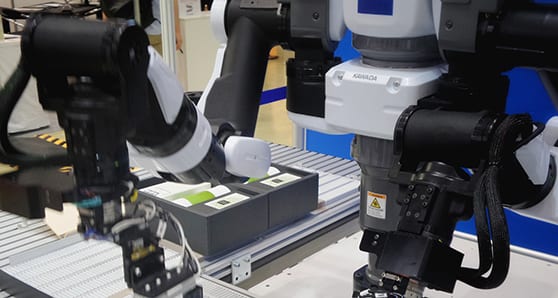 The robots are coming, the robots are coming!
The robots are coming, the robots are coming!
They may not be an unstoppable evil army ready to take over the world as in a bad sci-fi movie, but they’re definitely making headway on factory assembly lines and increasingly in other industries.
A United Kingdom research firm, Oxford Economics, did a study that covered seven advanced economies, including the U.S., the U.K. and Germany, but excluding Canada. It predicts that by 2030, some 20 million manufacturing jobs will be lost in those countries alone.
The spread of existing technology, and advances in artificial intelligence and computer capacity will contribute to the increase in steel collar workers.
These factors will also bring robotics into the service sector, from floor cleaning to health care. But it will likely be more than 10 years before automation makes significant inroads into these less controlled environments.
Green Party Leader Elizabeth May has suggested taxing robots. Since you always get less of what you tax, this would discourage some robot installations while helping maintain a few jobs.
However, the structure of May’s robot tax seems to indicate more concern with the loss of government revenue than the loss of jobs. The tax on a robot would be equal to the income tax that was paid by the displaced worker(s).
We need to give May some credit. She seems to be the only political leader mentioning where government could get the revenue to pay for all the goodies we’re being promised during the current federal election campaign.
But her plan would only move taxes from workers to robots. That won’t increase government revenues or pay for all May’s new programs.
While robots do replace human workers on the factory floor, additional labour is needed to design, build and maintain the robots. Such work is more skilled and better paid than the lost factory jobs.
So let’s not get carried away with old stereotypes of bad bosses kicking hundreds of needy workers into the streets and replacing them by robots.
Labour force observation in Canada show that decisions to automate aren’t taken lightly. Introducing new technology – even something as basic as a customer support system – is costly and complicated.
In just about every case where robotics or other automation is introduced, it’s not in order to dump workers and reduce wage payments. Rather, it’s because the firm can’t find qualified workers to do the basic manual and clerical jobs that machines can take over.
Raising wages isn’t a solution. The increase in employer costs would push the cost of the good or service produced beyond what customers would pay for it.
Companies can only provide attractive and well-paid jobs to workers who are productive. Output per worker is what keeps companies competitive, growing and able to offer good jobs with high and rising incomes.
Productivity determines a nation’s standard of living, and thus the level of public and private goods and services that its citizens can enjoy. But relative to other developed countries, Canada isn’t very productive.
Throughout this century and almost all of the last, our productivity has been well below that of the United States. This is reflected in our relative standards of living. Not only is our productivity below that of our biggest market and competitor, it’s also growing more slowly. The gap continues to widen.
Since 2006, productivity in Canada has grown by seven per cent. At least we have the direction right, but the rate of growth is pretty slow. At the same time, productivity in the U.S. – which was higher than ours to begin with – has grown by 13 per cent.
We can always increase output per worker by working more hours and some people, especially those who work part time and want full-time jobs, would be happy to do so.
But for many people, their well-being depends on a healthy work/life balance. For them, working more hours is not desirable.
So output per hour of work needs to increase to improve productivity. That means workers must be given the tools that make them more productive. Those tools come from our new and advancing technology – including robots.
Bulldozers and steam shovels put an end to the drudgery of digging ditches by hand. And the nation’s unemployment rate is at its lowest levels in decades, so those jobs have been replaced by something more fulfilling. Robots are the bulldozers of the 21 century.
Troy Media columnist Roslyn Kunin is a consulting economist and speaker.
The views, opinions and positions expressed by columnists and contributors are the author’s alone. They do not inherently or expressly reflect the views, opinions and/or positions of our publication.


